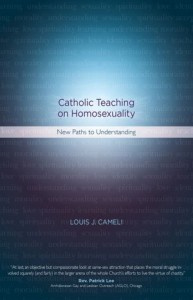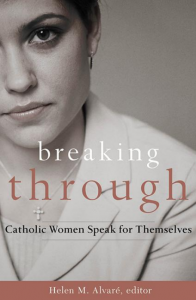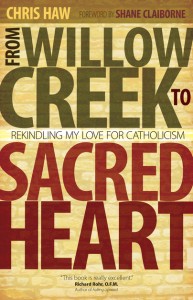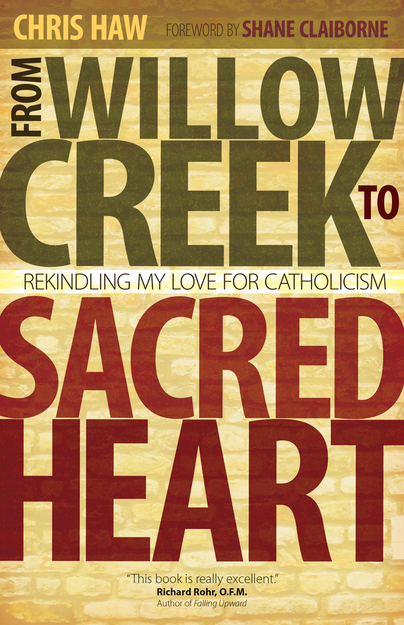Catholic Teaching on Homosexuality: New Paths to Understanding
Fr. Louis Cameli
When it comes to homosexuality, the Church’s basic teachings are clear. She condemns same-sex activity while considering same-sex attraction disordered, though not objectively sinful. Within those two bounds, however, lies a lot of gray area.
 Fr. Louis Cameli is a renowned pastoral leader and priest in the Archdiocese of Chicago and in his new book, Catholic Teaching on Homosexuality: New Paths to Understanding (Ave Maria Press, paperback, 192 pages), he navigates that area with sensitivity and poise.
Fr. Louis Cameli is a renowned pastoral leader and priest in the Archdiocese of Chicago and in his new book, Catholic Teaching on Homosexuality: New Paths to Understanding (Ave Maria Press, paperback, 192 pages), he navigates that area with sensitivity and poise.
Cameli begins by examining the major magisterial teachings on homosexuality, careful to distinguish between what they say and don’t say. He spends several pages unpacking what the Church means when she deems homosexual activity as “disordered”. By this word the Church does not claim gay people are “deranged, affected by disease, or crazed.” She uses it in the technical, philosophical-theological context which refers to something not ordered to its proper end or purpose. Since sex is inherently ordered toward procreation, by its nature homosexual activity is intrinsically “disordered.”
Cameli then offers careful responses to questions like:
- Is the sexuality of homosexually inclined persons a blessing or a curse?
- Does this sexuality lead a person to God or away from God?
- Can a homosexual person be a good Catholic?
While Cameli brings theological clarity to these questions, he really shines when reflecting on their pastoral dimensions. As noted by Fr. Patrick Lee, moderator for the Archdiocese of Chicago’s Gay and Lesbian Outreach, Cameli’s book balances objective analysis with deeply-needed compassion. He stresses that while the Church is a teacher, it also must be a learner in this realm. By listening to the lived experiences and challenges of people experiencing same-sex attraction, new possibilities emerge for spiritual care and greater hospitality within the Church.
He studies, for instances, how specific groups can relate to homosexually inclined people—priests, teachers, parents, friends, and family members. He also suggests ways that same-sex attracted people can live out their sexuality without compromising their identity in Christ through avenues like deep friendships and life-giving art.
Cameli concludes by reaffirming his central point: when it comes to homosexuality, the Church needs to balance fidelity to truth with commitment to love. Only then will homosexually inclined persons feel welcomed by the Church:
“It is both possible and desirable for persons with same-sex attractions to be at home in a Church which is both prophetic in its consistent proclamation of truth and loving in its universal outreach to all people no matter what their condition of life circumstance.”
If you’d like more clarity on what the Church teaches about homosexuality, or insights on how to sensitively respond to these oft-maligned brothers and sisters, Catholic Teaching on Homosexuality is a helpful solution.
In case you missed it, check out my video interview with Fr. Cameli concerning his new book.
A School of Prayer
Pope Benedict XVI
When it comes to papal teaching, most of the buzz goes to encyclicals, exhortations, and motu proprio’s. But one channel often ignored is the Wednesday audiences. These short, weekly messages allow a Pope to devote a series of lectures to one particular topic, even over several years.
 Pope John Paul II, for instance, devoted five year’s worth of Wednesday audiences to unpacking his marvelous Theology of the Body. Pope Benedict XVI has covered several themes in his Wednesday audiences including the Church Fathers, the Doctors of the Church, and great women throughout Church history.
Pope John Paul II, for instance, devoted five year’s worth of Wednesday audiences to unpacking his marvelous Theology of the Body. Pope Benedict XVI has covered several themes in his Wednesday audiences including the Church Fathers, the Doctors of the Church, and great women throughout Church history.
His latest series featured more than thirty messages from May 2011 to May 2012, and concerned the topic of prayer. These profound meditations on both the history and methods of prayer have been gathered into a single collection titled, A School of Prayer (Scepter, paperback, 200 pages).
The Pope begins the series by reflecting on the prayers of three great Old Testament figures: Jacob, Moses, and Elijah. The Pope points out that these men were great prophets and leaders, but “above all, [they] fulfilled [their] role by praying.”
From there, he moves to the Psalms, that great prayerbook of the Church. He also devotes several talks to Jesus’ own prayer life, and prayers throughout the book of Acts. His advice on prayer during persecution is especially relevant today when Christianity is under many attacks:
“When the first Christian community was confronted by dangers, difficulties, and threats, it did not attempt to work out how to react, find strategies, defend itself or decide what measures to adopt; rather, when it was put to the test, the community started to pray and made contact with God.”
As an accessible, rich, sweeping overview on prayer, A School of Prayer offers both history and devotion. Pope Benedict shows how the greatest Catholic leaders throughout the centuries cultivated a life of prayer and how we can do the same today.
Breaking Through: Catholic Women Speak for Themselves
Dr. Helen Alvare
Ever since the feminist movements of the 1970’s, the Catholic Church has consistently been accused of denigrating women. Whether through her counter-cultural teachings on sex and marriage, her firm prohibition against women-priests, or her recent stance against the so-called “contraception mandate,” the Church at best is seen as merely tolerant of women—and at worst, oppressive.
 But is that true? Does the Church really promote a male-chauvinistic agenda designed and maintained to keep women down? The answer, of course, is no. The Church has gone to great lengths to confirm its deep love and valuing of women. In 1995, Pope John Paul II wrote his magnificent Letter to Women. It affirmed womanhood as “part of the essential heritage of mankind and of the Church herself.” Pope Benedict XVI recently preached a whole series of Wednesday audiences on holy women throughout Church history.
But is that true? Does the Church really promote a male-chauvinistic agenda designed and maintained to keep women down? The answer, of course, is no. The Church has gone to great lengths to confirm its deep love and valuing of women. In 1995, Pope John Paul II wrote his magnificent Letter to Women. It affirmed womanhood as “part of the essential heritage of mankind and of the Church herself.” Pope Benedict XVI recently preached a whole series of Wednesday audiences on holy women throughout Church history.
Dr. Helen Alvare, law professor at George Mason University and one of today’s most distinguished Catholic women, has added her own contribution through a new book titled, Breaking Through: Catholic Women Speak for Themselves (Our Sunday Visitor, paperback, 180 pages). The book brings together nine women from a variety of backgrounds, experiences, and occupations to explore the struggles and joys of being a Catholic woman in America today.
What’s immediately striking, even from the table of contents, is the caliber of each contributor. These are smart, accomplished women. Almost all of them are lettered in law, medicine, psychology, or some other academic field. Their credentials alone burst the myth that “smart, successful, and Catholic” can never describe the same woman.
The contributors touch upon many of today’s hot-button issues. You’ll find chapters devoted to contraception, science, dating, same-sex attraction, politics, and the sex-abuse crisis. The writing is honest and far from a Pollyannish fairy tale where women blindly, wistfully accept whatever teachings are imposed upon them. They don’t shy away from their own doubts and confusions, especially regarding the Church’s moral teachings.
Yet despite this wrestling, each woman ultimately discovers authentic womanhood within Christ and his Church. They recognize Catholicism as the real source of joy and liberation—the true freedom women hunger for—and in turn reject each of the world’s paltry alternatives.
Next time someone tells you the Church is advancing a “war on women,” hand them this book, then respond asking, “what war?”
Dr. Alvare has also coauthored an open letter on women and religious freedom that has thus far attracted over 30,000 women’s signatures. Read and sign it at WomenSpeakForThemselves.com.
From Willow Creek to Sacred Heart: Rekindling My Love for Catholicism
Chris Haw
G.K. Chesterton once said that the Church is a house with a hundred gates, and no two men enter at exactly the same angle.
 Every conversion story is unique, yet few are similar to Chris Haw’s. In his new memoir, From Willow Creek to Sacred Heart: Rekindling My Love for Catholicism (Ave Maria Press, paperback, 256 pages), Chris recounts how he went from leading worship at one of the largest megachurches in the country, to protesting on behalf of the homeless and hungry, and finally to a crumbling, urban parish in one of America’s darkest cities.
Every conversion story is unique, yet few are similar to Chris Haw’s. In his new memoir, From Willow Creek to Sacred Heart: Rekindling My Love for Catholicism (Ave Maria Press, paperback, 256 pages), Chris recounts how he went from leading worship at one of the largest megachurches in the country, to protesting on behalf of the homeless and hungry, and finally to a crumbling, urban parish in one of America’s darkest cities.
Chris began as a Catholic—born, baptized, and raised. In his teen years, his mother brought him to Willow Creek Community Church outside of Chicago, an evangelical community with over 25,000 members. She enrolled Chris in the youth group there and he was inspired by young Christians who were vibrant and excited about their faith. Soon, he was active in their music ministry, helping to lead worship services and small groups.
Through Willow Creek, Chris also met fellow radical Shane Claiborne. Together, the two young friends wrestled with Jesus’ commands to truly know and love the poor. Like St. Francis and Dorothy Day before them, they took Jesus’ words literally and sought a life of simplicity, compassion, and solidarity. They began meeting regularly with homeless friends on the street. They protested against injustice even unto jail. And they searched for true community amidst the backdrop of 21st-century suburban Christianity.
That search eventually drove Chris to Camden, NJ, a city plagued with drugs and crime. He moved in not aiming to “fix” any of the myriad problems, but to live alongside the marginalized. Once there, he was drawn to small church down the street from his home, Sacred Heart parish. it was a beacon of light and hope amidst the city’s darkness and despair and, through the a friendship with the parish priest, Chris began attending Mass (hence the book’s title, a double entrende.)
At Sacred Heart, he found his childhood Catholicism re-awakened. He was drawn in by the liturgy and its paradoxical emphasis on “the triumph of a forgiving resurrection over murder and death,” and he decided to enter the Church formally once more.
The first half of Chris’ book tracks this whole journey from megachurch evangelicalism to urban Catholicism. But in the second half, he offers some profound theological meditations on themes like liturgy, violence, scapegoating, death, and how to cope with the Church’s institutional dysfunction.
From beginning to end, From Willow Creek to Sacred Heart is a poetic, honest, and raw. It’s one of the most beautiful spiritual memoirs I’ve read, bearing the same mesmerizing glow as Day’s Long Loneliness and Thomas Merton’s Seven Storey Mountain. If you liked those classic memoirs, you’ll certainly enjoy From Willow Creek to Sacred Heart.
“Much more than an already fascinating Chestertonian re-discovery of the Catholic Faith, Chris Haws bears witness to the slow, patient, ideology-busting determination of God. This has brought him, via the dying reefs of Belize and the apocalyptic landscape of Camden, New Jersey into one of our faith’s best-kept secrets: a deep, delighting love for our material, corporal, human life—in all its vulnerability.”
— James Alison, Author of Broken Hearts and New Creations
Check back tomorrow for my video interview with Chris about his conversion and new book.
What are some good books you’ve recently read?

